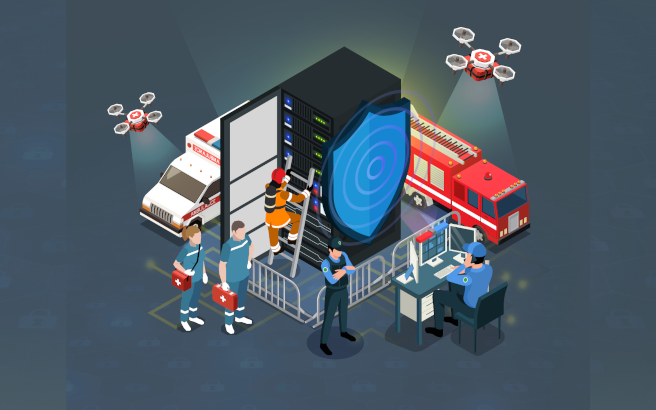
Currently, there is a constant evolution in the technologies and implementations made in Industrial Control Systems. On one hand, some of the most common implementations for the improvement of industrial systems infrastructures are digitalization and the use of cloud technology. On the other hand, the increase in communication protocols and IIoT devices (due to the growth of the Industry 4.0) generates a large volume of traffic that is difficult to control and secure.

The TETRA (Terrestrial Trunked Radio) network is a standard developed in Europe in the 1990s by ETSI (European Telecommunications Standards Institute), whose emergence came because of the management of telephone communications for extreme cases, in which standard communication via mobile might not work properly. Therefore, it can be considered as an alternative network for communications with emergency and security services to be always operational. TETRA unifies different digital radio interface alternatives for communications and serves as a standard for the construction of private mobile networks or PMR (Private Mobile Radio).

The proliferation of cybersecurity incidents in industrial environments has given rise to a huge concern in the various existing sectors. Some of them, such us the energy sector, are choosing the path taking in the banking sector with the TIBER-EU framework. In addition, many governments are allocating large sums of money to their government agencies to develop strategic plans in which that exercises are included

The programming of PLCs is a fundamental part of the initial phases when building and designing industrial plants. About that environment, the company will base all its operations in that environment making the configuration of these controllers a critical element. When it comes to programming these devices there are a series of steps and best practices that take advantage of the native functionalities available and that involve little or no need to resort to a PLC programmer, protecting the device in a simple way with minimum spend on resource.

The increase in industrial control systems and the shortcomings of those systems in cybersecurity measures have made such systems a preferred target of attacks. The number of tools designed to pose a threat to the OT sector has increased, and the use of the Incontroller tool is especially concerning.

PLCs, or Programmable Logic Controllers, have been part of industrial environments since the birth of automation. Given their evolution over time, thanks to greater intelligence, they have become a target of interest for potential attackers.

Although the use of black channel is associated with physical safety, it is also part of logical safety. Here we can see how the black channel intervenes in communications, its contribution, advantages, use cases and the differences between it and the white channel.

The security of control systems can be threatened from different aspects, with the end device being the most important attack vector. With this in mind, the IEC, within the 62443 standard, wanted to emphasise devices by preparing a document exclusively concerning their security: IEC62443-4-2. This document contains different technical requirements to improve the security of the types of assets that can be found in a control system.

This post will analyse the vulnerabilities associated with Log4Shell, detected in the library Log4j, which is found in infinite software products both in technical and industrial fields. Although there have been other instances of more sophisticated vulnerabilities, the problem with this one is area of exposure.

In previous articles an introduction was given to the 61850 regulation and the different protocols of which it consists. As explained in those articles, the GOOSE and SV (Sample Values) protocols, included in the standard, use multicast frames. Security is very difficult to implement in this type of frame, but there are a number of measures that make possible to raise the security level.



